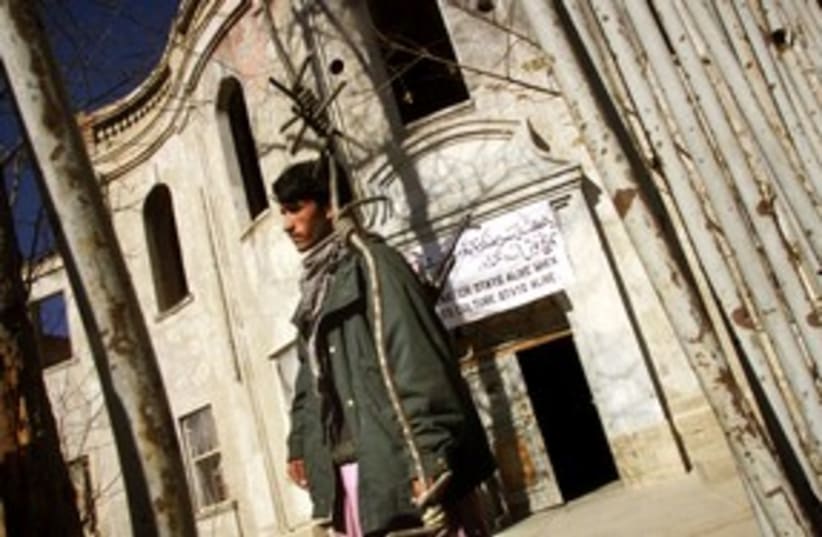RELATED:Afghanistan: 6 Taliban killed as 20-hour assault quelledMany of the museum's original pieces were broken, destroyed or stolen during the Taliban era or the civil war that preceded it in the 1990s, but some have been pieced back together and a series of archeological digs have also unearthed new treasures.Among the fresh discoveries are a wooden Buddha dating back to the fifth century and Buddha heads made of clay and plaster.They are helping a whole nation slowly rediscover a classical past as a confluence of cultures from India to China and from Iran and central Asia to the East."Each week there is a new find. Most museums in the world are static, but this one is growing," said Anne Feenstra, a Dutch architect involved in restoring the museum which itself was heavily damaged in the civil war.A statue of the Buddha sitting cross-legged is placed in a glass box up a flight of stairs in the museum building, while the headless figure of Kushan king Kanishka, restored after it was destroyed by the Taliban, adorns another corner.Some walls have pictures of treasures lost during the civil war or to the Taliban, who famously showed their contempt for Afghanistan's pre-Islamic heritage by blowing up two giant, centuries-old Buddha statues carved into a hillside in Bamiyan.A group of high school girls in head-scarves listen in a hallway as a teacher explains the country's Buddhist past, part of the museum's drive to build awareness in a generation that has seen too much conflict and extremism."Afghanistan is an amalgamation of cultures of the region," Information and Culture Minister Sayed Makhdoom Raheen told a conference in Kabul this month where he appealed for help to preserve the nation's heritage.After 30 years of war, Afghanistan is often portrayed as simply a land of warring tribes, defined by a battle against outside powers. Reconnecting with its past reminds Afghans they have a more complex and sophisticated culture.If Afghanistan can preserve its monuments, it can show its own people and the world that as a key part of the ancient silk route it was once a crossroads of Asia, a creative melting pot with a cosmopolitan spirit, Raheen said."We have seen massive destruction and decay, but many relics still exist," he said. "They must be saved from annihilation."
Piece by piece, Afghanistan reclaims its history
Kabul's rebuilt National Museum is helping to show the world Afghan culture is more sophisticated than tide of news reports suggest.

RELATED:Afghanistan: 6 Taliban killed as 20-hour assault quelledMany of the museum's original pieces were broken, destroyed or stolen during the Taliban era or the civil war that preceded it in the 1990s, but some have been pieced back together and a series of archeological digs have also unearthed new treasures.Among the fresh discoveries are a wooden Buddha dating back to the fifth century and Buddha heads made of clay and plaster.They are helping a whole nation slowly rediscover a classical past as a confluence of cultures from India to China and from Iran and central Asia to the East."Each week there is a new find. Most museums in the world are static, but this one is growing," said Anne Feenstra, a Dutch architect involved in restoring the museum which itself was heavily damaged in the civil war.A statue of the Buddha sitting cross-legged is placed in a glass box up a flight of stairs in the museum building, while the headless figure of Kushan king Kanishka, restored after it was destroyed by the Taliban, adorns another corner.Some walls have pictures of treasures lost during the civil war or to the Taliban, who famously showed their contempt for Afghanistan's pre-Islamic heritage by blowing up two giant, centuries-old Buddha statues carved into a hillside in Bamiyan.A group of high school girls in head-scarves listen in a hallway as a teacher explains the country's Buddhist past, part of the museum's drive to build awareness in a generation that has seen too much conflict and extremism."Afghanistan is an amalgamation of cultures of the region," Information and Culture Minister Sayed Makhdoom Raheen told a conference in Kabul this month where he appealed for help to preserve the nation's heritage.After 30 years of war, Afghanistan is often portrayed as simply a land of warring tribes, defined by a battle against outside powers. Reconnecting with its past reminds Afghans they have a more complex and sophisticated culture.If Afghanistan can preserve its monuments, it can show its own people and the world that as a key part of the ancient silk route it was once a crossroads of Asia, a creative melting pot with a cosmopolitan spirit, Raheen said."We have seen massive destruction and decay, but many relics still exist," he said. "They must be saved from annihilation."